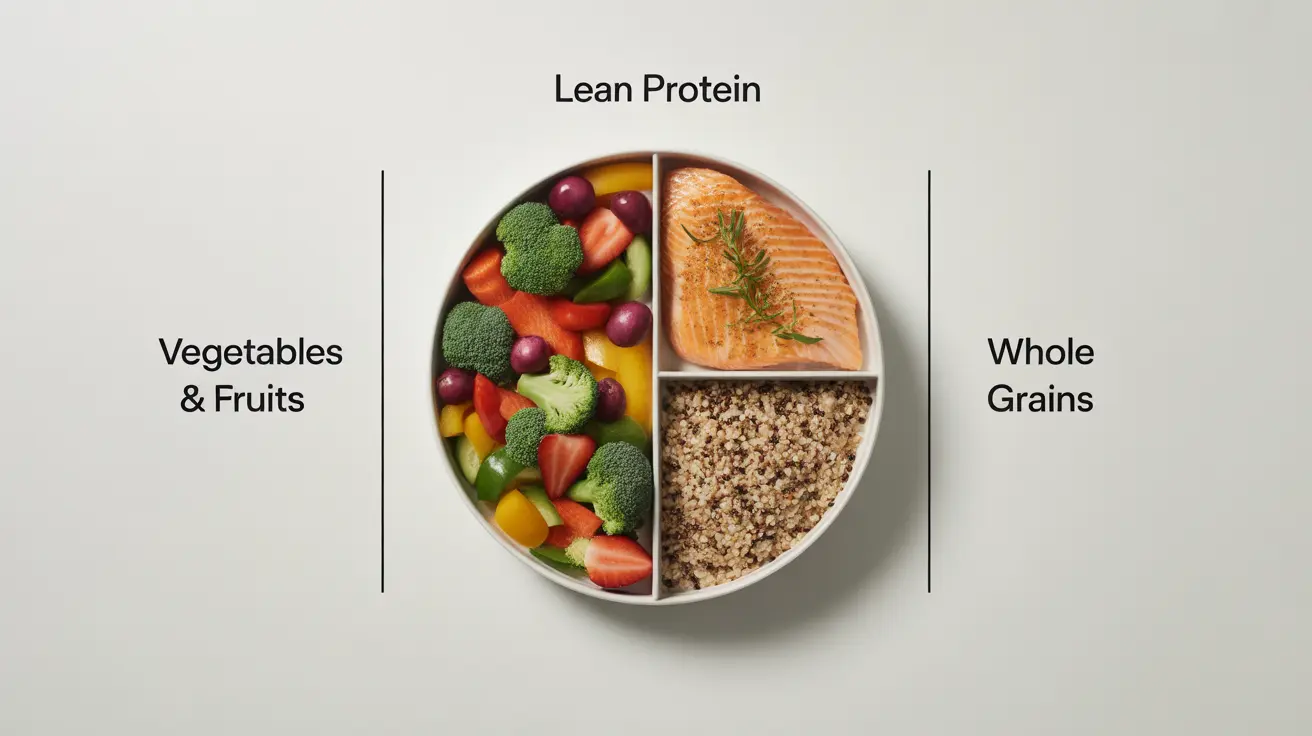Understanding and implementing portion control is a fundamental aspect of maintaining a healthy diet and achieving your wellness goals. Whether you're looking to lose weight, maintain a healthy lifestyle, or simply develop better eating habits, mastering portion control can make a significant difference in your nutritional journey.
In this comprehensive guide, we'll explore practical strategies, proven techniques, and expert tips to help you develop a healthier relationship with food portions, making it easier to manage your intake without feeling deprived.
Understanding Portion Control Basics
Portion control isn't about strict dieting or completely eliminating foods you enjoy. Instead, it's about being mindful of how much you eat and making informed decisions about serving sizes. This approach allows you to enjoy all foods in moderation while maintaining a balanced diet.
The Difference Between Portions and Serving Sizes
While portions refer to the amount of food you choose to eat, serving sizes are standardized amounts defined by nutrition experts. Understanding this distinction helps you make better decisions about your food intake and align your portions with recommended serving sizes.
Smart Strategies for Portion Control
Use Smaller Plates and Bowls
One of the most effective ways to control portions is to use smaller dishware. Research shows that people tend to fill their plates regardless of size, so using smaller plates naturally leads to consuming less food while still feeling satisfied.
The Plate Division Method
Divide your plate into sections:
- Half for vegetables and fruits
- Quarter for lean proteins
- Quarter for whole grains or complex carbohydrates
Hand Portion Guide
Your hands can serve as convenient portion measurement tools:
- Palm = 3-4 oz of protein
- Cupped hand = ½ cup of grains or fruits
- Thumb = 1 tablespoon of fats
- Fist = 1 cup of vegetables
Mindful Eating Practices
Incorporating mindful eating habits can significantly improve your portion control success:
- Eat slowly and without distractions
- Listen to your body's hunger and fullness cues
- Take time to appreciate your food
- Put your utensils down between bites
Strategies for Eating Out
Restaurant portions are often significantly larger than recommended serving sizes. Try these approaches:
- Share meals with dining companions
- Ask for a to-go box at the beginning of the meal
- Choose appetizers as main courses
- Look for "small plate" options on the menu
Snacking and Portion Control
Don't let snacking derail your portion control efforts:
- Pre-portion snacks into small containers
- Never eat directly from large packages
- Keep healthy, portion-controlled snacks readily available
- Plan snacks as part of your daily food intake
Frequently Asked Questions
What are simple and effective tips for controlling portion sizes to prevent overeating?
The most effective tips include using smaller plates, measuring portions with your hands, eating slowly, and pre-portioning snacks. Additionally, drinking water before meals and waiting 20 minutes before getting seconds can help prevent overeating.
How does using smaller plates and dividing my plate help with portion control?
Smaller plates create an optical illusion that makes portions appear larger, helping you feel satisfied with less food. Dividing your plate ensures a balanced meal with appropriate portions of each food group, naturally limiting overconsumption.
Can portion control help with long-term weight loss and maintaining a healthy weight?
Yes, portion control is a sustainable approach to weight management because it doesn't restrict specific foods. Instead, it teaches you to eat appropriate amounts, making it easier to maintain a healthy weight long-term while still enjoying your favorite foods in moderation.
How do I use my hands as a guide to measure appropriate portion sizes?
Use your palm for protein portions, cupped hand for grains and fruits, thumb for fats, and fist for vegetables. This method provides a convenient, portable way to estimate serving sizes without requiring measuring tools.
What are practical strategies to practice portion control when eating out or snacking?
When eating out, consider sharing meals, requesting a to-go box immediately, or ordering appetizers instead of entrees. For snacking, pre-portion snacks into small containers, avoid eating from large packages, and keep healthy, portioned snacks readily available.




